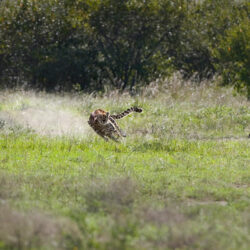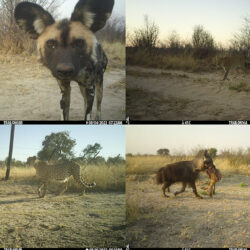Radio and GPS Tracking Training in Erindi Private Game Reserve
-
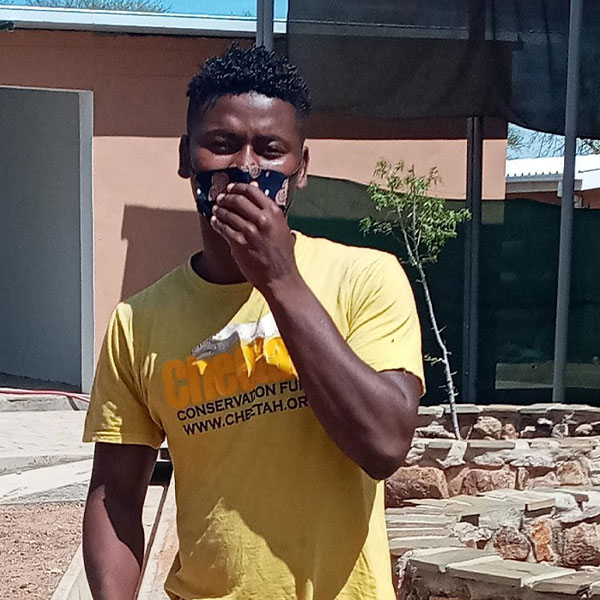
- by Justin Moya August 26, 2022
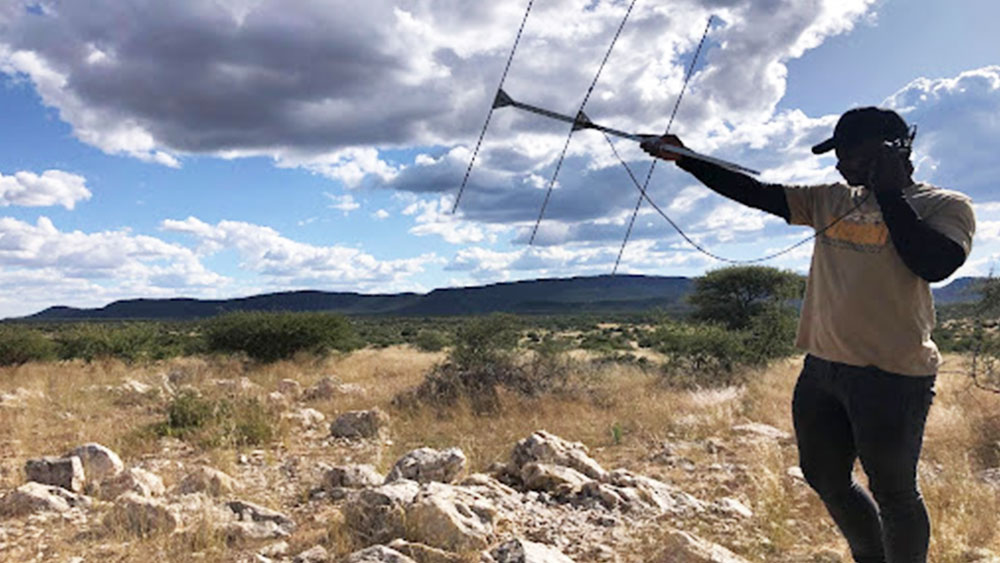
My name is Justin Moya, I’m from Katima Mulilo which is located northeast of Namibia, I’m a cheetah keeper at Cheetah Conservation Fund. I am passionate about nature and driven by a desire to work with wildlife. I was excited to have an opportunity to spend a week of training on tracking cheetahs fitted with radio and GPS collars in Erindi Private Game Reserve. The reserve is located south-east of Omaruru in Namibia. The five male cheetahs we were tracking (Ben, Thor, Loki, Max, and West) were rescued orphans, rehabilitated, and released at Erindi. It was exciting to go see them in the wild since I had an opportunity to take care of them while they were at CCF.
The experience I gained, and the understanding about collars (both radio/VHF and GPS) was just outstanding. I got to understand how everything works in the field. The GPS on the collar ideally would show where the cheetahs have been and their movement pattern and also it gives us the location of the cheetahs every 2hrs. That’s how activity clusters are formed. It’s basically a diagram of points of location networked close to together, which are then checked by field ecologists in order to find signs of cheetahs. Depending on the time of the day (ideally before evening) we check the locations for signs of kills. We also look for signs of sleeping or resting areas. The recent known GPS locations of the cheetahs are used as a starting point of tracking using VHF to have visual sight of the cheetahs. When we get a visual we then check if they are in good health and have no injuries and so on.
The 17th of April was the first day. We drove off from CCF’s Centre at around 9am in the morning. After 2-3 exciting hours of driving we arrived at Erindi around 12pm. After resting for an hour, we were ready to begin with the training. We went to check on the movement clusters (a group of similar points which can be GPS location) using the cheetahs’ GPS locations. They had formed a day before my arrival and we were investigating to see if there were signs of a kill. Unfortunately, we didn’t find anything which means they hadn’t successfully hunted on the previous day. Later that day, we went back in the field. I was given the task to track down the five male cheetahs that were recently released. I used the GPS location as a starting point of tracking. It was only a matter of time before we would find them. I was able to get a signal from the VHF collar using the directional antennae then we just followed the signal as it got stronger until we got a visual on the cheetahs. They were not bothered at all with us getting close to them. We gave them water to drink and just checked them out to make sure that there are no injuries and they looked good. Then we left them alone so they could hunt.
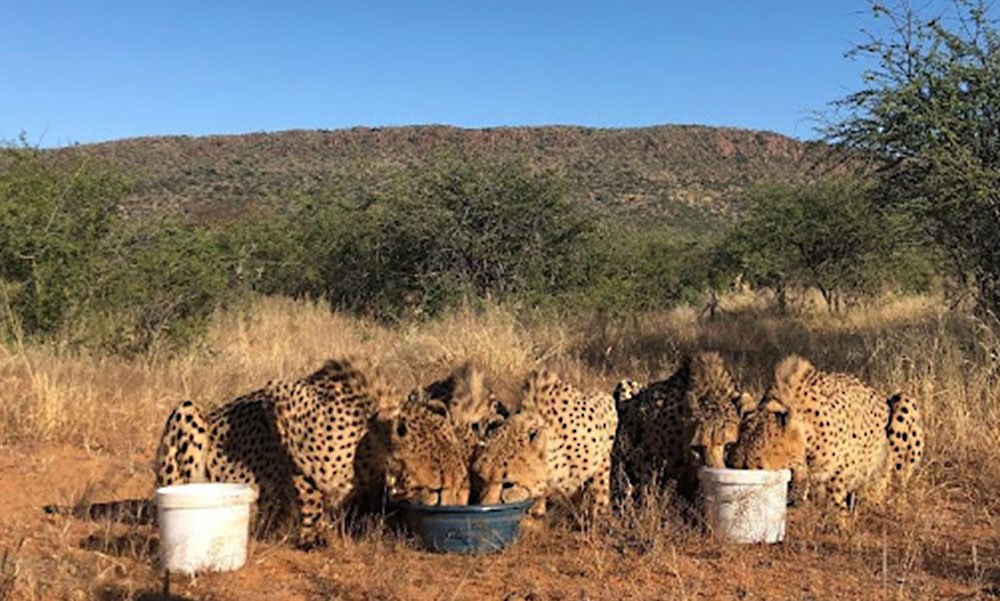
On the second day, in the morning, we went to visit one of the old clusters that had formed a couple of days before I arrived. We didn’t find any signs of a kill except bird feathers and signs of places where we could see evidence of sleeping. Later in the afternoon, we set up to track down the five males again but unfortunately our tracking truck would not start due to a mechanical issue. We had Eli’s personal truck, so we loaded into that vehicle instead. We then visited one of the recent clusters, but it was just a resting cluster. Eventually we tracked them down, getting a bit closer this time. In our attempt to get a closer look we startled them and all five ran away from us. Perhaps they were not used to the new vehicle approaching them. This is a desirable behaviour and we want them to be wary of unfamiliar objects and people.
The third day was fascinating because we tracked down two other male cheetahs, Oban and Talisker. They are the grandsons of a CCF rehabilitated female cheetah, which I found just resting under a tree. These two male cheetahs prefer the savanna with more open space with few trees and tall grasses. This helps for them to blend in and become invisible from their prey. There was abundant prey species like impalas, warthog, blue wildebeest, oryx and springboks. Later, in the afternoon, we drove off to track down the five males again since they have not made a kill for 2-3 days. I tracked them down and found three of the five cheetahs in a woodland area with a little bit of thickets. They were eating an oryx calf that they had killed and their bellies were full. Their faces and mouths were covered with blood and it was just like watching the National Geographic channel. It was a great feeling since they were previously always been fed by people. Now in the wild, they are learning that they can feed themselves and they make regular successful hunts. It is a very important milestone that we were happy for them to achieve. The other two males of the group of five, were still close by. They were just about 50m from where the other three were eating the kill.

Cheetahs take time to learn from their instincts on what to do. Killing their prey before eating is an important skill they need to know. We saw the other two cheetahs trying to take down another oryx calf and started eating it before ensuring it was dead. As a result they got disrupted by three adult oryx that came to the calf’s rescue and managed to escape with the calf. The cheetahs later followed them, but did not manage to catch the calf again. These things were happening right in front of us about 20m away. Given that it was in an open space we saw everything clearly. It was just amazing and we kept our distance not to interfere with their hunting. Later in the evening we were excited to check if they had caught their prey based on what the GPS would show or the cluster that they would have formed. Instead of catching the second calf they went back to eat what the three males had left on the kill, like we expected they would do.
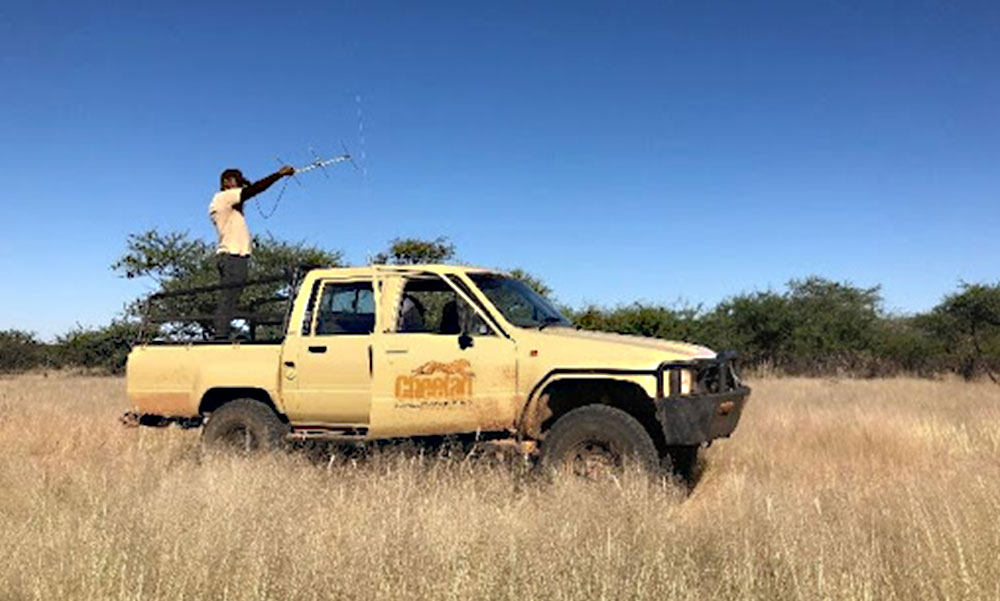
The fourth day was full of surprises – the best tracking surprise ever. First, I tracked down the five males again, and we found them in the same area where they had made a kill. They were quite full and were not ready to move around a lot. We gave them water and they drank and disappeared into the thickets. I was instructed by Eli to track down an animal named ‘Sphinx’. It was a great opportunity to track down another cheetah and it was a profound tracking experience. As the signal got stronger and we were super close to them looking in the tall grass. All the sudden I just saw this amazing beautiful big cat, a lion! I was so happy I could not believe I tracked down not only one lion, but a pride of eight lions. Three were adult males, two females and three cubs. It was just amazing and they were so calm of course but I could not believe my eyes. Later, in the evening we went to a sundowner since it was my last evening there. It was so beautiful watching the sunset up on top of a mountain seeing giraffes, elephants, and brown hyenas. Such beauty of nature is just breathtaking.
On the fifth and last day of my training we were able to track down the five males again. We also visited one of their recent clusters just to check if they had made another kill, but it turned out to be just a resting and sleeping cluster. Later, we set up to track down one of our female cheetahs called Hella but we could not get any signal from her as she was out of range so we had to leave without seeing her. We made some plans to recollect her soon so that we can continue her monitoring.
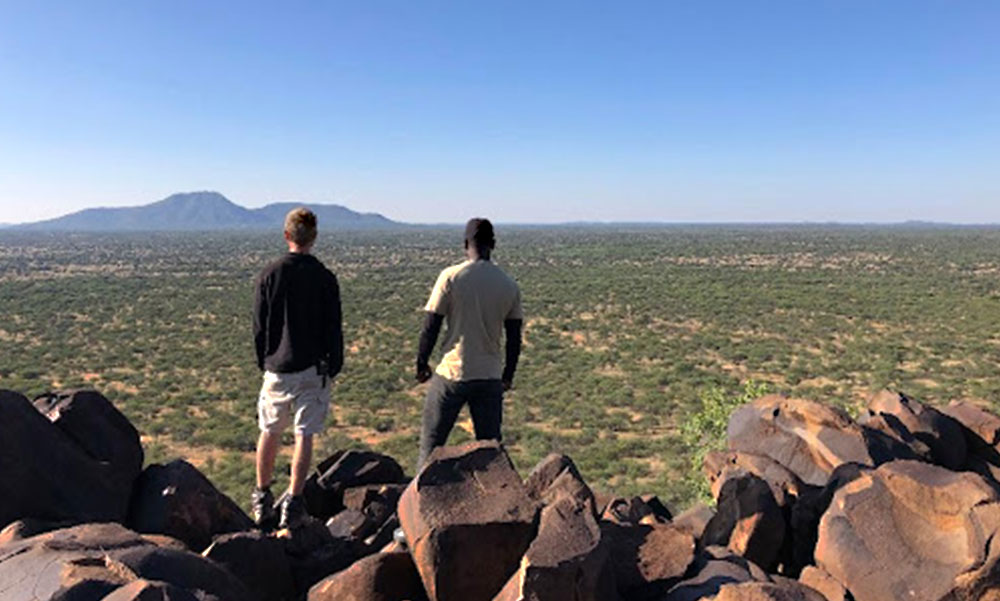
Overall, my training was really amazing from the beginning to the end. I learned quite a lot about tracking and also the challenges. It was difficult tracking through thick bushes that are not easy to drive through, staying aware of the presence of animals like leopards, African wild dogs and lions. It’s sometimes not possible to walk on foot in the bush in order to check the clusters but due to the dangers we have no choice but to drive everywhere. It was great to have an idea how the use of collars with both GPS and VHF makes it easier to either have visuals of cheetahs or to monitor released cheetahs. It was a great opportunity to be able to learn from Eli Walker in the field and bear witness to the amazing scenery that nature has to offer.
Related Reading
-
October 15, 2024
The Ecology of the Landscape Down to the Smallest Part

